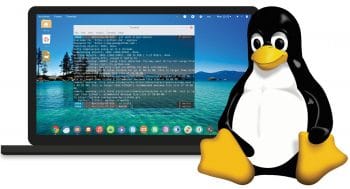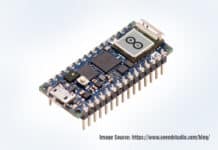
There are many reasons why Linux should be preferred over proprietary software platforms such as Windows and Mac. But here, we are listing the top ten reasons to give you a clear picture.
Until a few years ago, Linux was used mainly for servers and was not considered suitable for desktops. But its user interface and ease of use has been steadily improving over the last few years. Linux has today become user-friendly enough to replace Windows on desktops. It is being used by hundreds of thousands of people across the globe. Here are the ten most important reasons why.
Linux ought to be adopted by home users, educational institutes and businesses.
1. High security
Installing and using Linux on your system is the easiest way to avoid viruses and malware. The security aspect was kept in mind when developing Linux and it is much less vulnerable to viruses compared to Windows.
Programs cannot make changes to the system settings and configuration unless the user is logged in as the root (equivalent to the administrator user in Windows) user. Most users do not log in as the root; hence, they cannot do much damage to the system, except to their own files and programs, since the downloaded file/malware will have limited privileges. You can browse the Internet without worrying about your system getting infected. However, users can install ClamAV antivirus software in Linux to further secure their systems.
The reason for this higher level of security is that since Linux is open source software, the source code is available for review. A huge number of developers all over the world have gone through the code, which means that most of the flaws have already been discovered.
2. High stability
The Linux system is very stable and is not prone to crashes. The Linux OS runs exactly as fast as it did when first installed, even after several years. Most of us must have experienced how a freshly installed Windows system runs extremely fast and the same system becomes slow after around six months to one year. Then, your only option most of the time is to reinstall the OS and all the other software.
The uptime for the Linux servers is very high and the availability is around 99.9 per cent. Unlike Windows, you need not reboot a Linux server after every update or patch. Due to this, Linux has the highest number of servers running on the Internet. According to an article on the zdnet website, 96.3 per cent of the top 1 million Web servers are running on Linux. Twenty-three out of the Top twenty five websites run on Linux. The two remaining websites in the top twenty five are live.com and bing.com, which belong to Microsoft!
3. Ease of maintenance
Maintaining the Linux OS is easy, as the user can centrally update the OS and all software installed very easily. All the variants of Linux have their own central software repository, which is used to update the system and keep it safe. They offer regular updates and the system can be updated without rebooting it. The updating can be done periodically, with just a few clicks, or users can even automate the updating process. Updating a Windows system is not so easy compared to a Linux system. Also, in Windows, all the third party software like Acrobat Reader and Firefox have to be updated individually.
4. Runs on any hardware
All of us know that with every new release of Windows OS, a huge number of hardware systems become obsolete as their technical specifications are no longer adequate to run the latest Windows OS. Linux makes very efficient use of the system’s resources. Linux installation can be customised for users and for specific hardware requirements. The installation procedure is very flexible, and allows users to choose the modules they want to install. This allows them to install Linux even on old hardware, thus helping in optimal use of all the hardware resources.
Linux runs on a range of hardware, right from supercomputers to watches. You can give new life to your old and slow Windows system by installing a lightweight Linux system, or even run a NAS or media streamer using a particular distribution of Linux. There are also lightweight desktops like Xfce and LXDE which can run on lower-end PCs.
5. Free
Linux is completely free and users do not need to pay for anything. All the basic software required by a typical user and even an advanced user are available. Dozens of educational software are available under Linux. Even the equivalent of professional software for desktop publishing, photo editing, audio editing and video editing are available. Businesses can use the software free of cost and reduce their IT budgets substantially.
6. Open Source
The most important aspect of Linux is that its source code is available as it falls under the FOSS category (Free and Open Source Software). The developer community benefits from this as its members have the freedom to view and modify the source code, which is not the case with proprietary software, which they can only use. Several countries are developing their own versions of Linux. This will ultimately help these countries in developing their own OSs for specialised or strategic areas like defence, communications, etc, to begin with.
Cyber warfare will play an important role in any war in the future. Usage of foreign and compromised computer operating systems and communication software can bring the country to its knees within a few days, both militarily and economically. Hence, using FOSS tools is critical for the security of any country. Several countries including China, Russia and Cuba are developing their own OSs based on Linux. C-DAC has developed BOSS (Bharat Operating System Solutions), India’s own PC operating system.
7. Ease of use
Contrary to the general belief that Linux is only for geeks, it has now become user-friendly and has a good graphical user interface (GUI). It has almost all the functionality that Windows has. The GUI has developed to the extent that most of what typical users want can be done on Linux, as easily as it is done in Windows, without knowing any commands.
In case you are using some applications which run only on Windows, you can install Wine (Windows Emulator), using which you can run those applications on a Linux system.
Though the perception is that Linux is not gamer friendly, several games are now available on Linux. Even if a particular game is not available on Linux, you can install PlayOnLinux to run Windows games.
8. Customisation
Users have tremendous flexibility in customising the system as per their requirements. There are numerous choices for wallpapers, desktop icons and panels. There are more than half-a-dozen desktop environments to choose from, like GNOME, KDE, etc. For any task, right from the GUI interface and file managers, to DVD burners and browsers, around four to six options are available for any particular software. The Linux versions of most popular browsers are available.The Linux philosophy is based on using several small programs, each of which does one task very well. But these programs can be combined to write really powerful programs and utilities. The Linux OS offers a command line interface with several shells to choose from. Systems administrators can enjoy the powerful command line interface and write shell scripts to automate routine maintenance and various other tasks.
9. Education
This is the most useful aspect for students, as they can use the software to study how it works, before modifying and extending the code to suit their needs. This will also help them to learn the internals of an OS and the software. This process will help in the development of new software and aid innovation based on local needs. Even if users are not programmers, they can contribute to Linux by helping in documentation, translation and testing.
It can be a fantastic educational tool for schools and colleges as free software is available to aid in teaching. Proprietary software for computation, like MATLAB, is very expensive. There are alternatives available to it like Scilab and GNU Octave. Linux software is available in many areas— Celestia and Stellarium for astronomy, Avogadro and Gabedit for chemistry, EMBOSS and TreeView X for biology; and ROOT, Octopus and Step for physics.
10. Support
There is strong community support for Linux over the Internet through various forums. Any question posed in forums will usually get a quick response as a lot of volunteers are online and working to solve the problems due to their passion for Linux. The paid support option is also available for commercial enterprises, with companies like Red Hat and Novell offering 24×7 support for critical applications and services.
















































































https://cdn.shopify.com/s/files/1/0212/1004/products/linux-2.jpg?v=1429497076
what the theme there was on picture?
I want to know also, same question
[…] 编译自:OpenSource […]
[…] 英文原文:Ten reasons why we should use Linux […]
free and no viruses